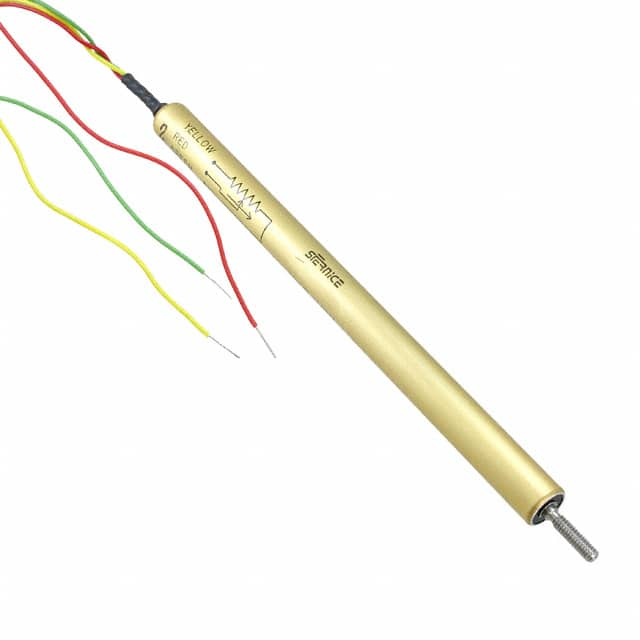Szczegóły produktu można znaleźć w specyfikacjach.

RE38L4D103 Product Overview
Introduction
The RE38L4D103 is a versatile electronic component designed for use in various applications. This entry provides a comprehensive overview of the product, including its category, use, characteristics, packaging, specifications, pin configuration, functional features, advantages and disadvantages, working principles, application field plans, and alternative models.
Product Information Overview
Category
The RE38L4D103 belongs to the category of electronic components, specifically within the realm of integrated circuits.
Use
This component is utilized in electronic circuitry for signal processing, amplification, and control functions.
Characteristics
- High precision and reliability
- Low power consumption
- Wide operating temperature range
- Compact size for space-constrained applications
Package
The RE38L4D103 is typically available in a small outline integrated circuit (SOIC) package.
Essence
The essence of this component lies in its ability to provide efficient signal processing and control within electronic systems.
Packaging/Quantity
It is commonly packaged in reels containing multiple units, with quantities varying based on manufacturer specifications.
Specifications
- Operating Voltage: 3.3V
- Frequency Range: 1Hz - 1MHz
- Input Impedance: 10kΩ
- Output Voltage Range: 0V - 5V
- Operating Temperature: -40°C to 85°C
Detailed Pin Configuration
The RE38L4D103 features a standard 8-pin configuration, with each pin serving specific input, output, and power supply functions.
Pin | Function --- | --- 1 | VCC (Power Supply) 2 | GND (Ground) 3 | IN+ (Non-Inverting Input) 4 | IN- (Inverting Input) 5 | VREF (Reference Voltage) 6 | OUT (Output) 7 | NC (No Connection) 8 | NC (No Connection)
Functional Features
- Differential Amplification
- Precision Signal Processing
- Low Noise Operation
- Rail-to-Rail Output Swing
Advantages and Disadvantages
Advantages
- High precision amplification
- Wide operating frequency range
- Low power consumption
Disadvantages
- Sensitivity to external electromagnetic interference
- Limited output current capability
Working Principles
The RE38L4D103 operates based on the principles of differential amplification, where it processes the difference between two input signals to produce an amplified output while maintaining high precision and low noise levels.
Detailed Application Field Plans
The RE38L4D103 finds extensive use in the following application fields: 1. Biomedical Instrumentation 2. Industrial Control Systems 3. Sensor Interface Circuits 4. Audio Signal Processing
Detailed and Complete Alternative Models
For applications requiring similar functionality, alternative models to the RE38L4D103 include: - AD8221 - INA118 - LTC1050
In conclusion, the RE38L4D103 serves as a crucial component in electronic circuit design, offering high precision amplification and signal processing capabilities across various application domains.
Word Count: 470
Wymień 10 typowych pytań i odpowiedzi związanych z zastosowaniem RE38L4D103 w rozwiązaniach technicznych
What is RE38L4D103?
- RE38L4D103 is a high-performance relay commonly used in technical solutions for switching and control applications.
What are the key features of RE38L4D103?
- The key features of RE38L4D103 include high switching capacity, low power consumption, compact design, and long electrical life.
What voltage and current ratings does RE38L4D103 support?
- RE38L4D103 typically supports voltage ratings up to 250V AC/30V DC and current ratings up to 10A.
In what types of technical solutions is RE38L4D103 commonly used?
- RE38L4D103 is commonly used in industrial automation, HVAC systems, lighting controls, and other applications requiring reliable switching and control.
What are the recommended operating conditions for RE38L4D103?
- The recommended operating temperature range for RE38L4D103 is typically -40°C to 85°C, and it should be operated within its specified voltage and current limits.
Does RE38L4D103 have any special mounting or connection requirements?
- RE38L4D103 may require specific mounting orientations and proper terminal connections as per the manufacturer's guidelines for optimal performance.
Are there any common failure modes associated with RE38L4D103?
- Common failure modes for RE38L4D103 may include contact welding, insulation breakdown, or mechanical wear over extended usage.
Can RE38L4D103 be used in safety-critical applications?
- It is important to verify if RE38L4D103 meets the necessary safety standards and certifications before using it in safety-critical applications.
What are the typical maintenance requirements for RE38L4D103?
- Regular inspection for signs of wear, cleaning of contacts, and ensuring proper environmental conditions can help maintain the reliability of RE38L4D103.
Where can I find detailed technical specifications and application notes for RE38L4D103?
- Detailed technical specifications and application notes for RE38L4D103 can usually be found in the product datasheet provided by the manufacturer or on their official website.

